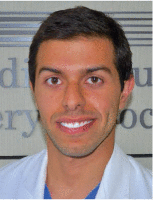Treatment strategies for patients with an INTERMACS I profile
- PMID: 25793022
- PMCID: PMC4362064
- DOI: 10.14797/mdcj-11-1-4
Treatment strategies for patients with an INTERMACS I profile
Abstract
Treatment of patients with INTERMACS class I heart failure can be very challenging, and temporary long-term device support may be needed. In this article, we review the currently available temporary support devices in order to support these severely ill patients with decompensated heart failure. Strategies of using a temporary assist as a bridge to long-term device support are also discussed.
Keywords: INTERMACS system; cardiac risk factors; heart assist device; heart failure; right heart dysfunction.
Figures





Similar articles
-
Percutaneous device therapy to prevent and treat acute decompensated heart failure.Methodist Debakey Cardiovasc J. 2009;5(3):16-25. doi: 10.14797/mdcj-5-3-16. Methodist Debakey Cardiovasc J. 2009. PMID: 20308960 Review. No abstract available.
-
Mechanical circulatory support devices in advanced heart failure: 2020 and beyond.Prog Cardiovasc Dis. 2020 Sep-Oct;63(5):630-639. doi: 10.1016/j.pcad.2020.09.003. Epub 2020 Sep 21. Prog Cardiovasc Dis. 2020. PMID: 32971112 Review.
-
[Systems of assisted circulation in the treatment of heart failure].Kardiologiia. 2010;50(9):51-6. Kardiologiia. 2010. PMID: 21118167 Review. Russian. No abstract available.
-
Venoarterial extracorporeal membrane oxygenation is a viable option as a bridge to heart transplant.J Thorac Cardiovasc Surg. 2022 Jan;163(1):140-147.e4. doi: 10.1016/j.jtcvs.2020.08.026. Epub 2020 Aug 16. J Thorac Cardiovasc Surg. 2022. PMID: 32928549
-
Longitudinal impact of temporary mechanical circulatory support on durable ventricular assist device outcomes: An IMACS registry propensity matched analysis.J Heart Lung Transplant. 2020 Feb;39(2):145-156. doi: 10.1016/j.healun.2019.11.009. Epub 2019 Dec 5. J Heart Lung Transplant. 2020. PMID: 31866174
Cited by
-
Left ventricular assist device (LVAD) program in Chile: first successful experience in South America.J Thorac Dis. 2018 Jun;10(Suppl 15):S1751-S1757. doi: 10.21037/jtd.2018.02.83. J Thorac Dis. 2018. PMID: 30034848 Free PMC article.
References
-
- Stevenson LW, Couper G. On the fledgling field of mechanical circulatory support. J. Am. Coll. Cardiol. 2007 Aug 21;50(8):748–51. - PubMed
-
- Kirklin JK, Naftel DC, Pagani FD, Kormos RL, Stevenson LW, Blume ED, Miller MA, Timothy Baldwin J, Young JB. J Heart Lung Transplant. 2014 Jun;33(6):555–64. - PubMed
-
- Urschel CW, Eber L, Forrester J, Matloff J, Carpenter R, Sonnenblick E. Alteration of mechanical performance of the ventricle by intraaortic balloon counterpulsation. Am J Cardiol. 1970 May;25(5):546–51. - PubMed
-
- Christensen DM. Physiology of continuous-flow pumps. AACN Adv Crit Care. 2012 Jan–Mar;23(1):46–54. - PubMed
-
- Teuteberg JJ, Chou JC. Mechanical circulatory devices in acute heart failure. In: Desai S, Puri N, editors. Cardiac Emergencies in the ICU, An Issue of Critical Care Clinics. Philadelphia: Elsevier; 2014 Jul.. p. 588. p. - PubMed
Publication types
MeSH terms
LinkOut - more resources
Full Text Sources
Other Literature Sources
Medical

